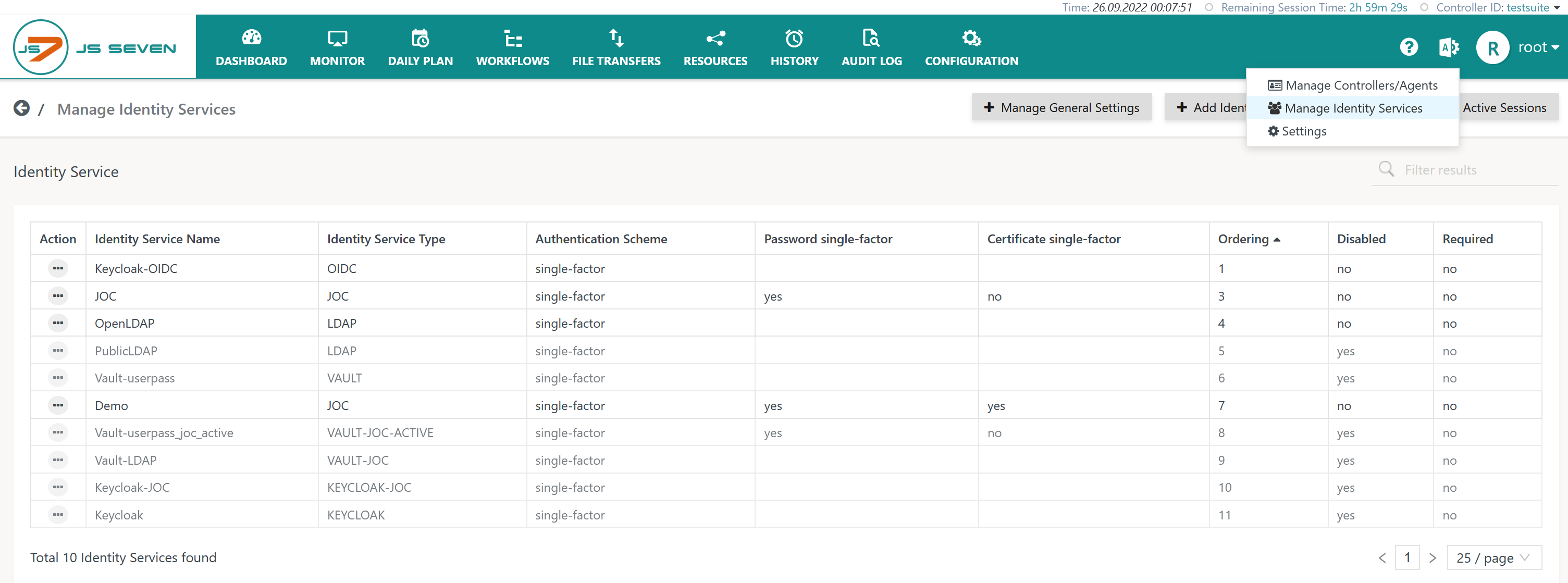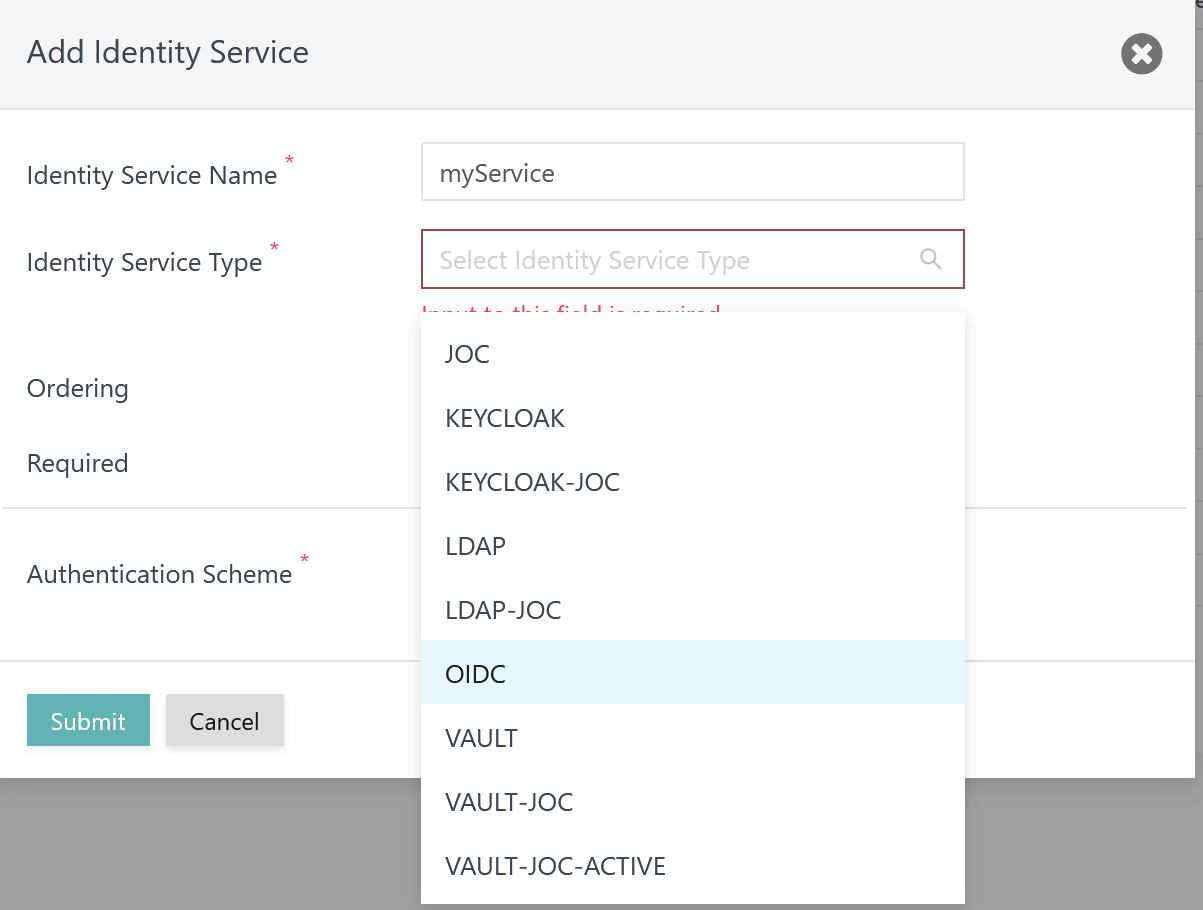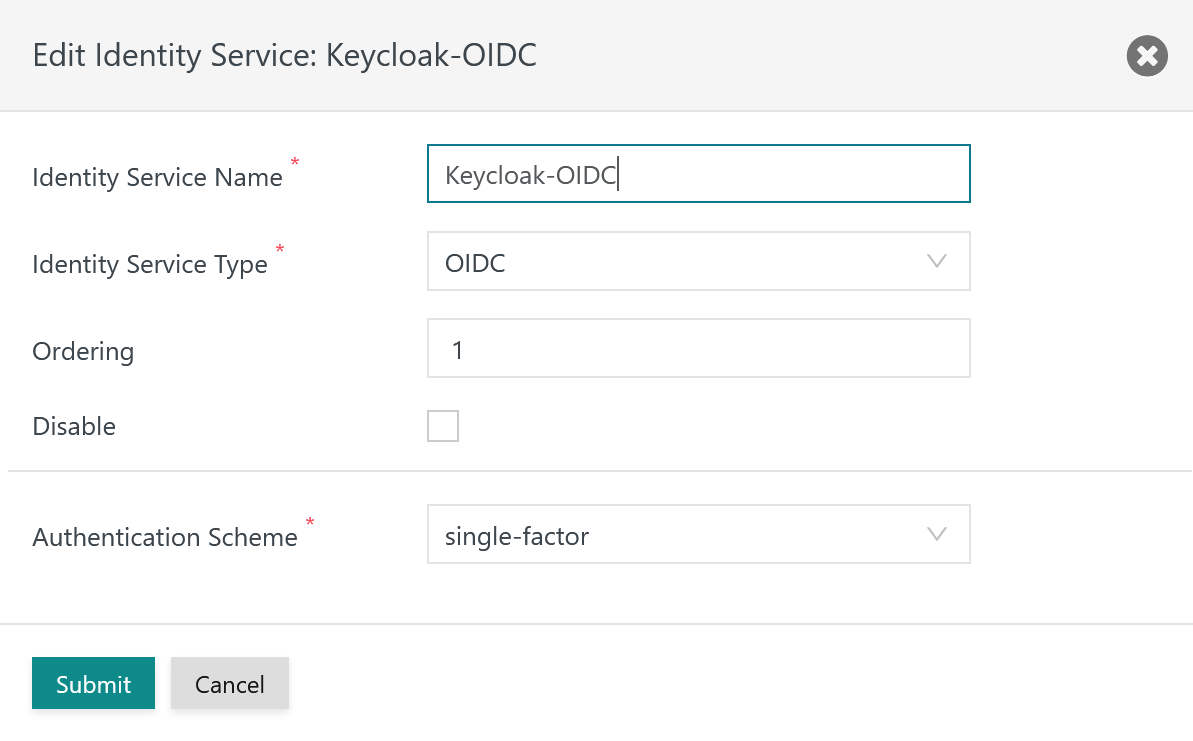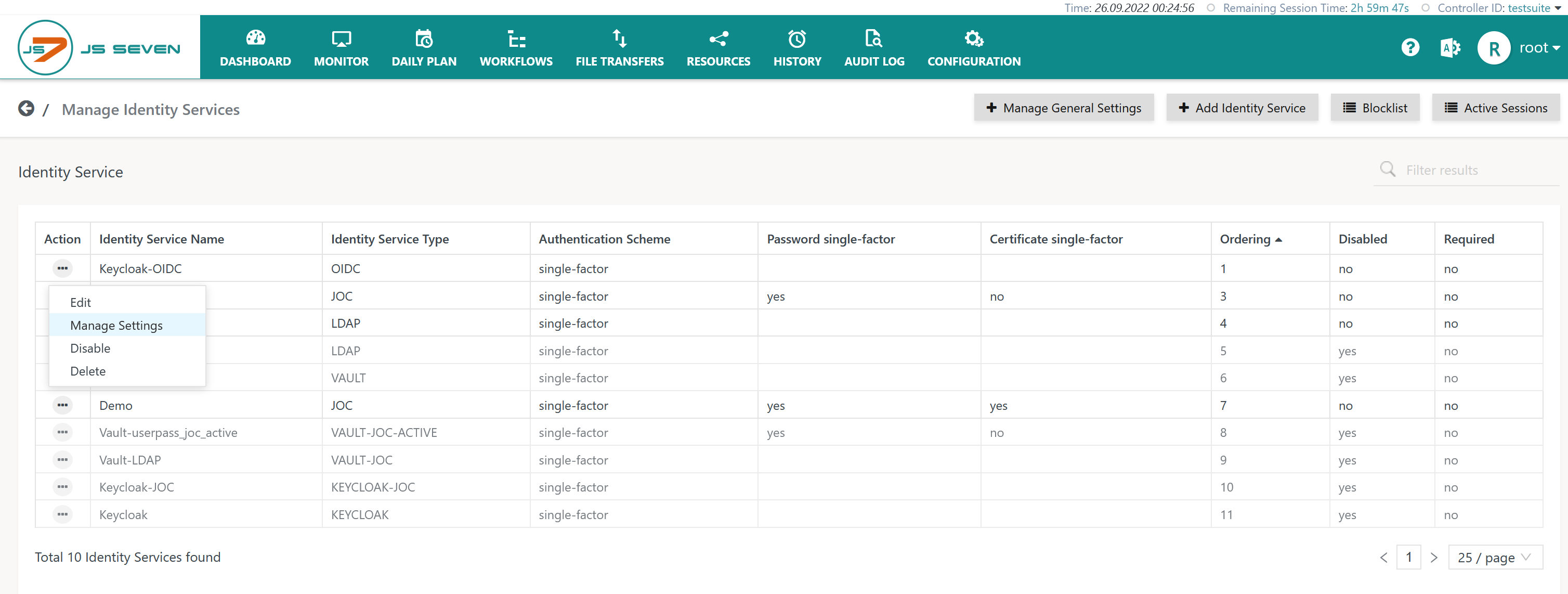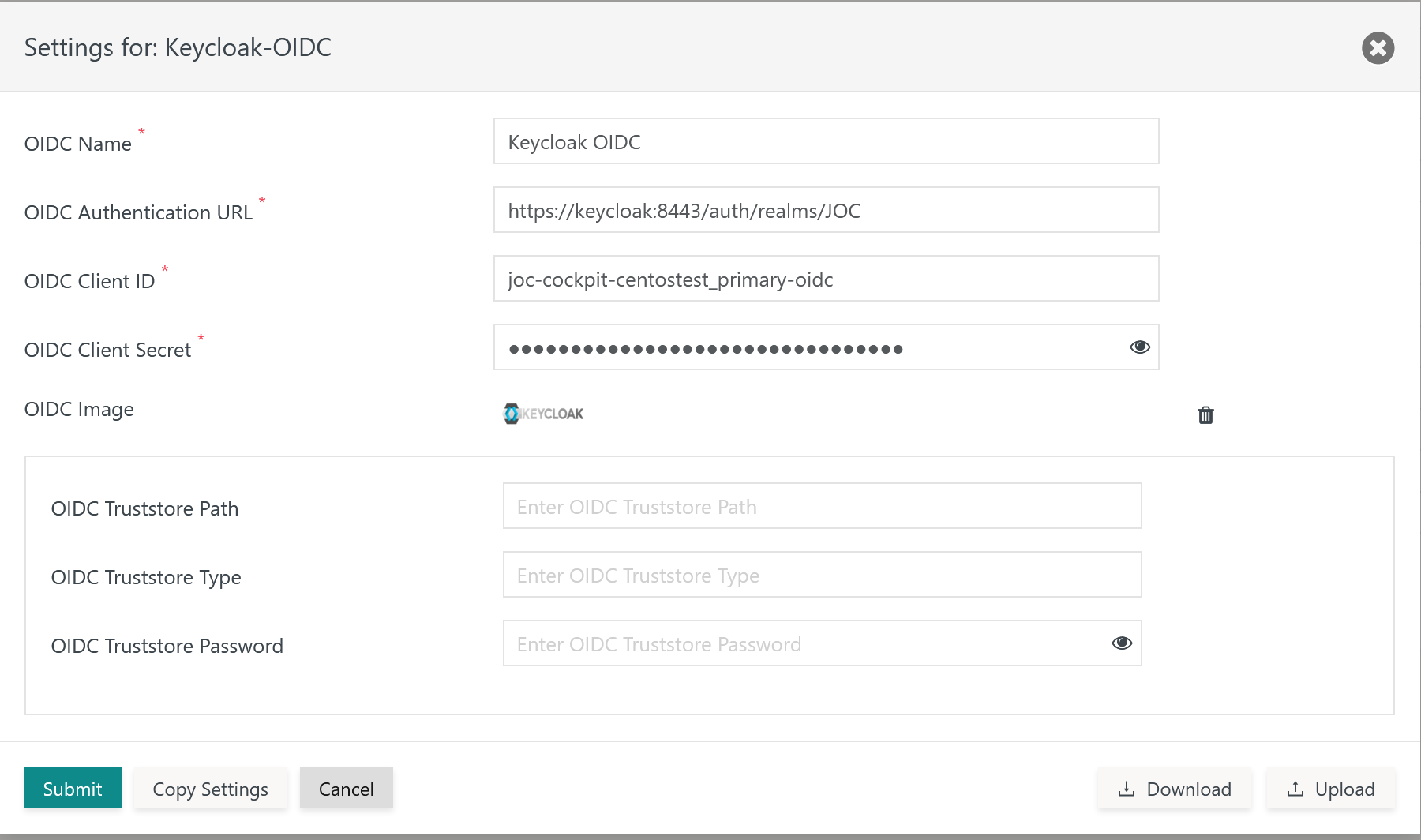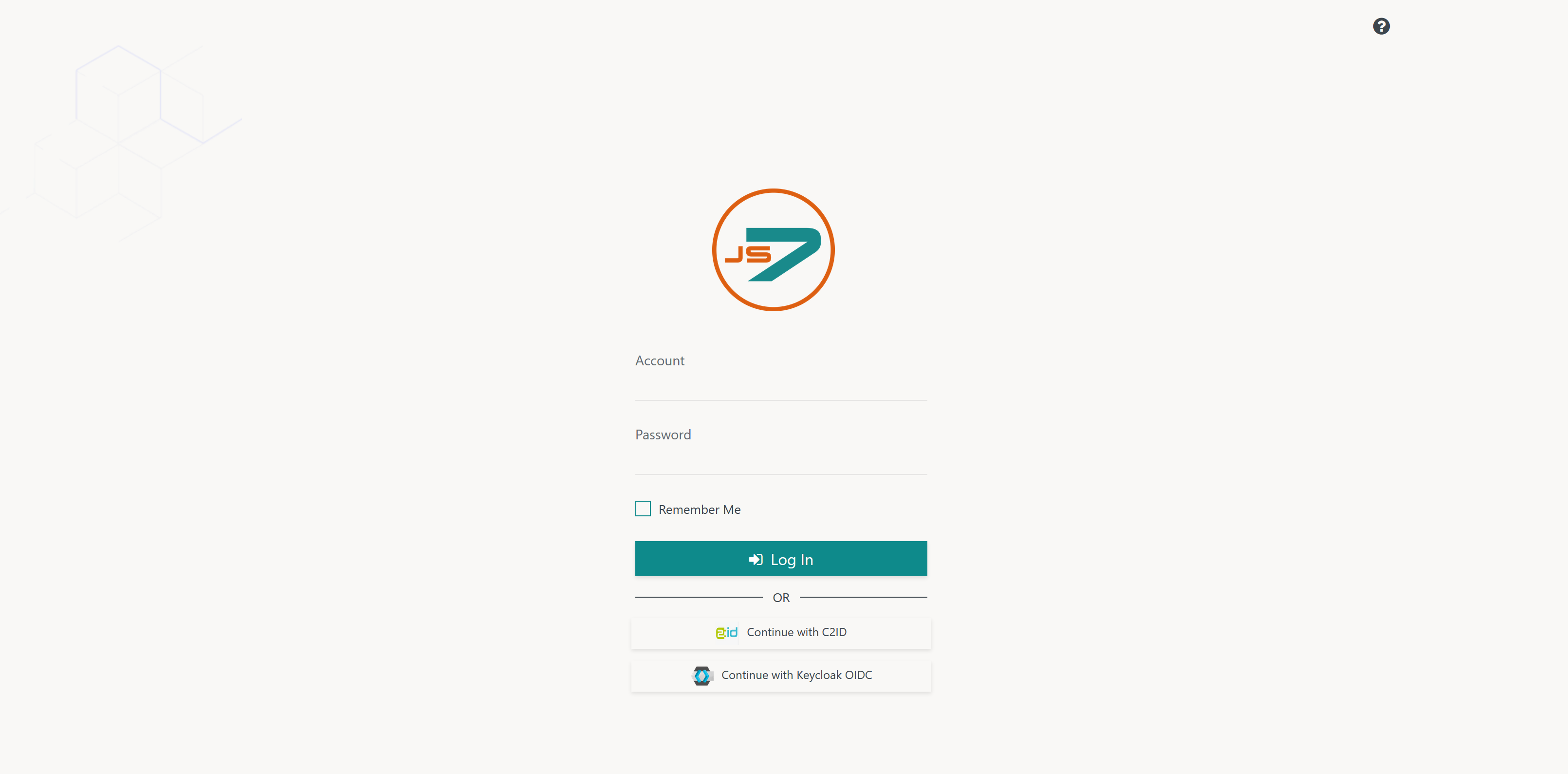Introduction
- The JS7 - Identity Services offer local management of user accounts for authentication and authorization.
- The OIDC Identity Service integration is available from JOC Cockpit:
- Any OIDC compliant Identity Provider can be used for authentication.
- This requires an OIDC Identity Provider to be installed and operated. JS7 does not ship with an OIDC Identity Provider.
- JS7 implements a REST client for use with OIDC Identity Providers.
- FEATURE AVAILABILITY STARTING FROM RELEASE 2.5.0
Terminology
The OIDC protocol knows of the following roles involved in authentication:
- The Identity Provider is a system external to JS7 that provides authentication services for user accounts.
- The Client is the JOC Cockpit GUI that performs login/logout with the Identity Provider and that receives tokens from the Identity Provider in case of successful login.
- The Application is the JS7 - REST Web Service API that is handed over a token by the Client and that verifies the token with the Identity Provider.
Identity Service Type
The following integration level is available from the OIDC Identity Service Type:
| Identity Service | Identity Service Configuration Items | ||||
|---|---|---|---|---|---|
| Service Type | Built-in | User Accounts/Passwords stored with | User Accounts/Passwords managed by | Roles/Permissions stored with | Roles->User Accounts Mapping managed with |
| OIDC | yes | OIDC Identity Provider | OIDC Identity Provider | JS7 Database | JOC Cockpit |
Explanation:
- Service Type:
OIDC- Management of user accounts with passwords is performed by the OIDC Identity Provider
- The assignment of roles to user accounts is performed by the JOC Cockpit Client.
- The JOC Cockpit stores user accounts and role assignments: in the JS7 - Database.
- The JOC Cockpit does not know passwords of user accounts or access tokens of successful authentication.
Identity Service Configuration
The icon in the JOC Cockpit main menu is used to select the Manage Identity Services page:
Add Identity Service
To add an Identity Service use the button Add Identity Service from the page shown above, listing the available Identity Services:
The remaining input fields for the popup window look like this:
Explanation:
- The
Identity Service Nameis a unique identifier that can be freely chosen. - The
Identity Service Typecan be selected as available from the above matrix. - The
Orderingspecifies the sequence in which a login is performed with available Identity Services. - The
Disabledattribute specifies if the respective Identity Service should not be considered by JOC Cockpit. - The
Identity Service Authentication Schemeallows to selectsingle-factorauthentication: user account and password are specified for login with the Identity Service.two-factorauthentication: in addition to user account and password a Client Authentication Certificate is required - see the JS7 - Certificate based Authentication article for more information.
Identity Service Settings
Having added an OIDC Identity Service it is necessary to add settings for the OIDC integration from the Identity Service's Manage Settings action menu item:
For use with the OIDC Identity Service Type:
- the OIDC Identity Provider product has to be installed and has to be accessible for JOC Cockpit and
- the following settings have to be specified:
Explanations:
| Name | Value | Description | Example |
OIDC Name | The name of the OIDC Identity Service. | This is the name of the Identity Service. It is used by JOC Cockpit to show the caption of the assigned login button. | Google, Keycloak |
OIDC Authentication URL | The URL used by the Client to login to the OIDC Identity Provider. | This URL is called by the Client for login and returns the Access Token from the OIDC Identity Provider. It is similarly used when reading settings of the OIDC Identity Provider with the /.well-known/openid-configuration URL and is used as the issuer during token verification. | https://keycloak:8283/auth/realms/JOC |
OIDC Client ID | The Client ID is configured in the OIDC Identity Provider. | The Client ID is used for a number of calls to to the OIDC Identity Provider. |
|
| The Client Secret is configured in the OIDC Identity Provider. | The Client Secret is used for a number of calls to the OIDC Identity Provider. |
|
OIDC Image | An image can be uploaded that is displayed with the login page. | Optionally an image can be uploaded. . | |
OIDC Truststore Path | The Path to a truststore. | Should the OIDC Identity Provider be configured for HTTPS connections then the indicated truststore has to include an X.509 certificate specified for the Extended Key Usage of Server Authentication.
| oidc-truststore.p12 |
OIDC Truststore Password | Truststore password | If the OIDC Identity Provider is configured for HTTPS connections and the indicated truststore is protected by a password then the password has to be specified. | secret |
OIDC Truststore Type | Truststore type | If the OIDC Identity Provider is configured for HTTPS connections then the type of the truststore has to be specified being either | PKCS12 |
OIDC Login
With OIDC Identity Services being configured they are displayed in JOC Cockpit's login screen like this:
Explanation:
- OIDC Identity Services are displayed in alphabetical order.
- If a users clicks the Identity Service in the login screen then the Identity Provider will show a popup window that asks for credentials or the user will be immediately authenticated in case of single sign-on.
OIDC Flows
Register Client
It is required to register a Client with the Identity Provider. The Client specifies the given Client ID and Client Secret during authentication. To achieve this, the token endpoint is called with
- client-id: The Client ID that is configured in the JOC Cockpit Identity Service.
- client-secret: The Client Secret that is configured in the JOC Cockpit Identity Service.
- redirect-urls: The list of allowed URLs for redirection after authentication by the Client. Consider that for clustered JOC Cockpit instances the URL of each JOC Cockpit instance has to be specified. For JOC Cockpit the protocol (HTTP, HTTPS), host and port is specified as the URL, for example
https://joc-2-0-primary:4446.
The step to register the Client is performed once in the lifetime of an OIDC Identity Service.
Authenticate Client
When authentication is performed with an Identity Provider then
- no additional required Identity Services will be considered by JOC Cockpit. Authentication is performed with the given OIDC Identity Service only.
- OIDC Identity Services cannot be set to be required.
In case that the Client previously did authenticate with the Identity Provider and that an active session exists then the Client immediately receives tokens from the Identity Provider. Without previous authentication the Client specifies credentials for authentication with the Identity Provider and creates a session in the Identity Provider. This mechanism allows Single Sign-On for Clients.
After successful authentication the Identity Provider returns to the Client:
- Access Token: The Client stores this token in a locker for later token renewal.
- Refresh Token: The Client stores this token in a locker for later token renewal.
- ID Token: This token is used by the Application to verify the Client's authentication.
Verify Token
During login the following tokens are returned to the Client:
- Access Token: A token returned after successful authentication by the Identity Service Provider.
- ID Token: A JWT Token with Header.Payload.Signature is expected that is used by the Application to verify the Client's authentication.
- Refresh Token: A token used by the Client to renew the Access Token.
After successful login of the Client the OIDC Token Verification URL is called by the Application with the following settings:
- Client ID
- Client Secret
- ID Token
Processing of the response and verification of the token is performed by the following steps:
- Checking if the response contains the field "active". The value of the field is expected to be "true".
- Checking if the ID Token is not expired.
- Checking if the Client ID (aud) stored in the ID Token is the same as in the configuration of the Identity Service.
- Checking if the issuer (iss) stored in the ID Token is the same as the OIDC Authentication URL in the configuration of the Identity Service.
- Checking if the account (e-mail) stored in the ID Token is the same as in the field "email" in the answer of the userinfo endpoint.
- Checking if the signature is valid for the given public key. The certs endpoint is the value of jwks_uri in the response to the /.well-known/openid-configuration call. The response of the certs endpoint includes a number of keys. The public key is calculated from the key entry using the value for n and e of the corresponding array element where the kid value matches the kid in the token header.
Renew Token
Access Tokens and ID Tokens include the expiration date. The tokens will be renewed by the Client 20s before expiration.
If the tokens cannot be renewed, for example if the underlying session in the Identity Provider is terminated, then the JOC Cockpit session will be terminated and the user is forced to login. This occurs in case that
- the session has been terminated in the Identity Provider.
- no valid Access Token is returned from the Identity Provider.
The Client will use the following configuration items for token renewal:
- client-id: The Client ID that is configured in the JOC Cockpit Identity Service.
- client-secret: The Client Secret that is configured in the JOC Cockpit Identity Service.
- grant-type:
refresh_token - refresh-token: The Refresh Token that was previously returned by the Identity Provider after successful authentication..
The JOC Cockpit Session Idle Timeout is configured in the JOC Cockpit global settings for Identity Services. If the session in the Identity Provider is no longer valid then the JOC Cockpit session will terminate at the point in time of the next token renewal.
Single Sign-On
The OIDC Identity Service allows single sign-on for the underlying Identity Provider:
- Users who previously have been authenticated with the same Identity Provider as used by the OIDC Identity Service can access JOC Cockpit from their browser without specifying credentials.
- Users who initially authenticate with an Identity Provider by use of JOC Cockpit can open additional tabs in their browser without specifying credentials.
- If a session is created for a user in the Identity Provider by authentication with JOC Cockpit then this session will last as long as the JOC Cockpit session.
- If the user's Access Token is revoked in the Identity Provider then the underlying session in the Identity Provider is continued until the JOC Cockpit session is terminated either by a logout operation or by reaching the Idle Session Timeout.
- If the user performs a logout operation from the JOC Cockpit session that was used to authenticate with the Identity Provider then the underlying session in the Identity Provider is terminated.
Logging
- Log Files
- Standard Log Files
- Identity Services log output to the
JETTY_BASE/logs/joc.logfile. This includes reporting success or failure of authentication. - Successful and failed authentication attempts including user accounts involved are logged to the
JETTY_BASE/logs/audit.logfile.
- Identity Services log output to the
- Debug Log Files
- For problem analysis during setup of an Identity Service increase the log level as explained with JS7 - Log Levels and Debug Options.
- The
JETTY_BASE/logs/joc-debug.logfile includes general debug output of JOC Cockpit. - The
JETTY_BASE/logs/authentication-debug.logfile includes debug output related to authentication and authorization. - The
JETTY_BASE/logs/jetty.logfile includes debug output of attempts to establish SSL connections.
